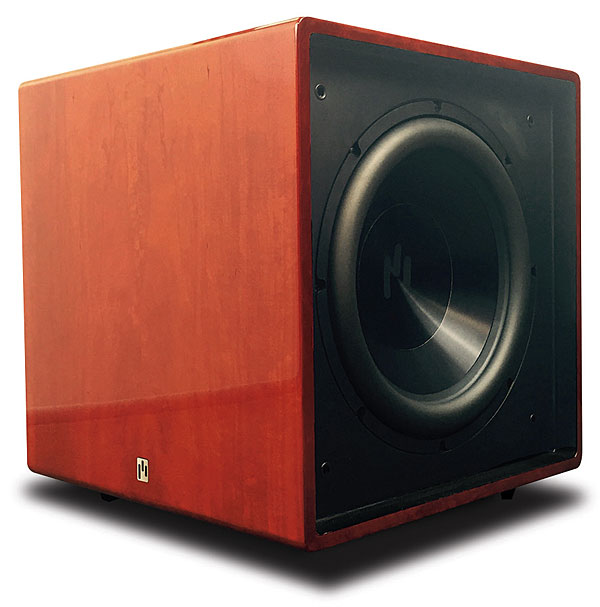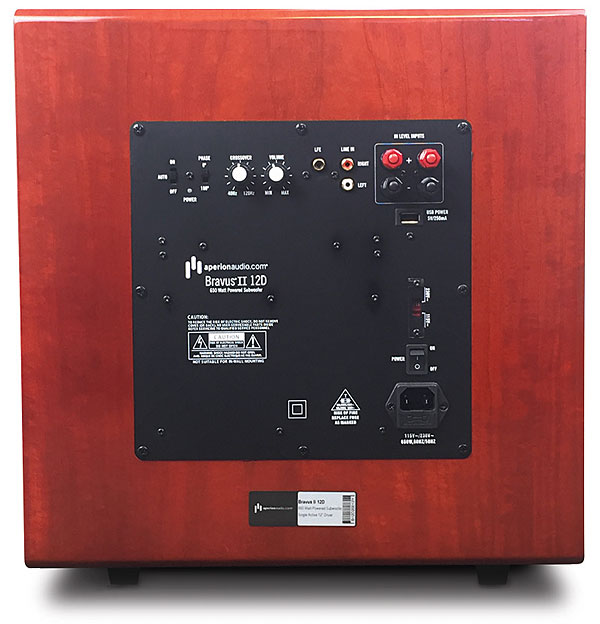Aperion Audio Verus II Grand Speaker System Review Page 2
The speaker grilles produced a small but noticeable loss of highfrequency air, a not uncommon effect in many speakers and one that was likely accounted for here in the design. Still I preferred the grilles removed and left them off for most of my listening.
Music, Music, Music
Because my review of the original Verus Grand speakers was six years ago, I’ll make no pretense here of a direct comparison. All I can say is that the Verus IIs can equal or better the performance of any other speakers I’ve yet heard in my current listening room (in the nearly two years since a cross-country move)—and some of those speakers were much more expensive. Even without the subwoofer, the bass from the towers was impressive. And while their measured in-room performance (from positions offering little near-wall bass support) began to die off rapidly below 65 Hz, my subjective listening contradicted this significantly. The tower’s bass was clean and tight, with just a little warmth in the upper-bass range which perhaps, in psychoacoustic terms, compensated to a degree for the deep-bass rolloff). Organ was believable (though clearly not hefty or extended enough to impress organ and bass-synth aficionados), and drums punched through with very solid impact. [Editor’s Note: Our quasi-anechoic measurements for the towers alone, which are not aided by any boundary or room gain, showed solid response down to 49 Hz and usable response down to 35 Hz, considerably deeper than what Tom measured in his room. See Test Bench on page 56.]

The midrange was subjectively uncolored and neutrally balanced, and the top end open, airy, and naturally detailed. Imaging and depth were superlative on solo voices, which were centered so precisely that I often thought the center speaker was operating for these music demos. (It wasn’t.) Superlative, too, was the performance on choral recordings, which were spread wide across the soundstage and portrayed with believable front-to-back depth. When the Bravus II 12D subwoofer joined the party, the first cut from the CD soundtrack of Master and Commander: The Far Side of the World nearly sent me leaping from my chair. I wasn’t expecting this sort of bass impact, in my huge room, from a small sub not much larger in any dimension than its 12-inch driver. While any result from a main-speaker/sub setup is highly dependent on the room, I had clearly found a sweet combination. On this and other percussive bass, the Aperion combo was almost invariably crisp and tight—refuting the audiophile meme that subwoofers always produce turgid, flabby bass. The enhancement of percussive bass (much of which lies above 50 Hz) was subtle when directly compared with the sound of the subwoofer-less towers, adding some body while improving midbass clarity. But with organ, bass synth, and other very deep material, the difference was quite obvious. On a sustained, 27-Hz (measured) organ note at the beginning of Respighi’s Pines of Rome, the small Bravus II 12D energized my huge room with a power I never would have expected.
Movies
The channel-level-setting, bandlimited noise from my Marantz pre/pro suggested that the center speaker was balanced brighter than the left and right towers. But fullrange pink noise proved otherwise, apart from a small measured rise at the seating position in the region from 700 Hz to 2 kilohertz and a slightly lowered plateau in the mid treble. (Our formal measurements, not yet completed as I write this, will tell the full room-effect-free tale.) In any case, the center’s threeway design maintained good dialogue intelligibility across a wide range of seating positions, and it produced a seamless blend with the left and right towers. The bookshelf speakers, in their surround role, also did their job perfectly in seamlessly blending with the front channels, calling attention to themselves only when the material demanded it.
I was immediately impressed by the Verus IIs on a wide range of my favorite movie material. The launch of the Saturn rocket in Apollo 13 raised the roof (as it always does on the best systems), magnificently accompanied by the late James Horner’s arguably best score.
The first entry in the (now seemingly endless) Transformers franchise isn’t exactly an Apollo 13–style classic, but it does offer some of my favorite demo scenes—and they’re far from the most raucous ones. Chapter 11 runs the audio gamut, from musical cues (which include a chorus) to car engines, crashing space debris, clanking metal, and both human and enhanced alien voices. The Aperions handled all of this beautifully, and the 125-wattsper-channel power offered by the Proceed amp (all channels driven into 8 ohms) was strain-free on all of the material I watched, at as high a level as I wanted, even in my large space (ranging from –5 to –9 decibels below calibrated reference).
I continued to be surprised by how well the subwoofer supported all of the above, as well as other dynamic sources, such as Independence Day (both the good one and the resurgent one). But the sub did have its limits on both music and movies. It barked its annoyance when trying to reproduce a below-20-Hz organ note at a realistic level. And in the scene from Oblivion where Tom Cruise lands his chopper in the middle of a ruined stadium, the sub bleated so badly that I instantly punched the mute control. No damage was done, but there’s only so far you can go with a single small sub in a very big room. The Bravus II 12D is an excellent sub when used within its (substantial) limits, but it can’t work miracles.

That said, there’s more to home theater than just crashes, booms, explosions, rocket launches, and cannon shots (yes, I sampled a few of those!). Quieter, more subtle material can be just as enticing. The King’s Speech is an exceptional film with a soundtrack that rarely strays beyond dialogue and music. It culminates in a striking final scene in which King George VI delivers a critical wartime speech as the soundtrack adds a gradually rising passage from Beethoven’s Seventh Symphony. I love all sorts of movies, but I can’t think of any action scene that can do any better job in engaging an audience with such a simple combination of dialogue and music. The Aperions played their part here flawlessly, every step of the way.
Conclusions
As I emphasized in my 2011 review of the Verus Grand lineup, the downside of internet-direct speaker buying is that you can’t listen before placing your order. Nor can you have the fun of shopping around to various (but alas, increasingly scarce) audio dealers to help you make your decision. But while speaker preferences involve more than a dash of taste—not to mention room effects that will vary from installation to installation—you have nothing to lose when you factor in Aperion’s 60-day, no-questions-asked return privileges.
I was deeply impressed by the original Verus Grand speakers. That goes double for the Verus IIs. They’re a serious bargain that can equal or even outperform many of their pricier competitors.
























































